Cano Island Biological Reserve
Quick Facts
- Location : 7 miles from Corcovado National Park
- Area : 494 land acres; 6,669 maritime acres
- Hours : 8 a.m. to 4 p.m. daily
- Telephone : 2735-5036
- Entrance Fee : $10.00
Cano Island is part of a mountain, or what's left of one. Like some dystopian biblical future, the island's 740 acres are the peak of an underwater mountain formed during the violent collision of tectonic plates along Costa Rica's coast line. Wild cocoa, rubber, strangler figs and trumpet trees grow inside the island, rimmed by sandy white shores. Within the forest, hide the remains of its Pre-Columbian inhabitants, the Diquis tribe. Several mysterious granite spheres mark the island suggesting that Cano Island was previously used as an ancient burial ground.
read more closeTen miles off the Uvita coast, Cano Island protects more than 6,000 maritime acres of aquatic habitats. Visitors to the island often catch glimpses of humpbacks and spotted dolphins breaching the water and playing among the waves. While underneath the Pacific's blue surface tension, snorkelers and divers will discover a colorful world painted with tropical fish that include shimmering jacks, rainbow parrot fish, striped damsels and more. These fish accompany the more spectacular sights, white-tipped reef sharks, manta rays, eels, and sea turtles swimming around 15 species of coral, rocks and sand-lined sea floor.
Activities
Bird and wildlife watching: Cano Island proper, doesn't have nearly the biological diversity of its underwater half, home to four-eyed opossums, paca, boa constrictors, brown tree frogs and the transparent tree frogs. A few species of rats, bats, small snakes and lizards can also be observed here.
Fewer than 20 species of birds live on Cano Island, including the cattle egret, common black hawk, osprey, brown booby and northern phalarope. Plant life is much more extensive; the reserve hosts over 158 species such as locust, fig, wild cocoa, strangler, and trumpet trees.
Snorkeling and diving: Tours normally include snorkeling or two dives, lunch and a few hours of relaxing on the beach – or a hike to the park’s archeological site. During the dry season (Dec.-April) visibility can reach up to 80 feet.
Divers look in on large schools of fish (blackjack, barracudas, snapper, and rainbow fish), white-tipped reef sharks, king angel, Moorish idol, puffers, surgeonfish, and more. Dolphins, sea turtles, and rays are often spotted en route to the island. The boat trip takes 45 minutes from Drake Bay, 90 minutes from Sierpe and an hour from Uvita Beach.
Hiking: The Mirador/Archeological Area Trail is the only hiking path on the island. This hour long trail splits after a half mile, one leg leads to a stunning vista and another to an ancient graveyard. Due to theft of pottery shards and other artifacts, backpacks are technically not allowed – however, this rule is not commonly enforced.
Facilities
Cano Island’s beach features one ranger station with a restaurant and bathroom. Camping and overnight stays are not allowed.
Getting There
Cano Island is accessible only by boat. Day trips depart from Dominical ($100), Drake Bay and Sierpe.
Cano Island Biological Reserve in Pictures
-
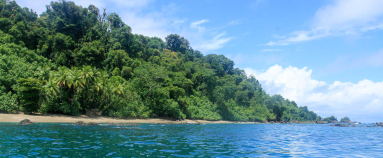
cano island reserve exterior - Costa Rica
-
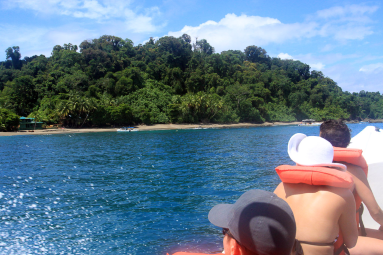
cano island reserve visitors - Costa Rica
-
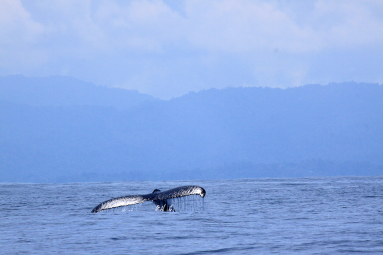
cano island reserve tail - Costa Rica
-
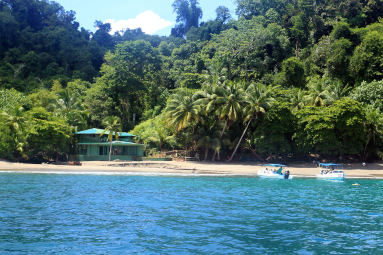
cano island reserve station - Costa Rica
-
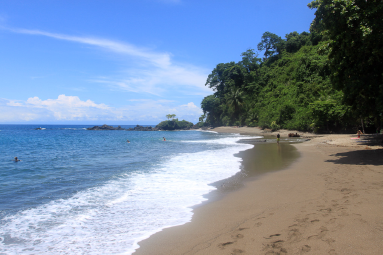
cano island reserve shore - Costa Rica
-
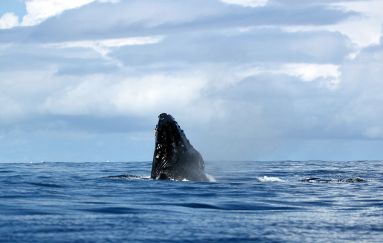
cano island reserve breach - Costa Rica
-
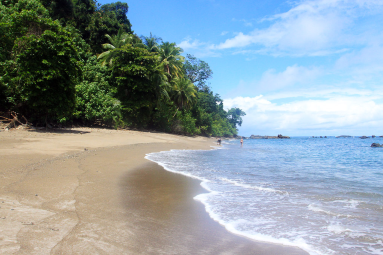
cano island reserve beach - Costa Rica

